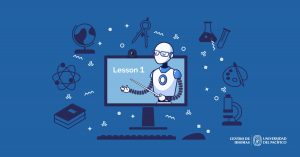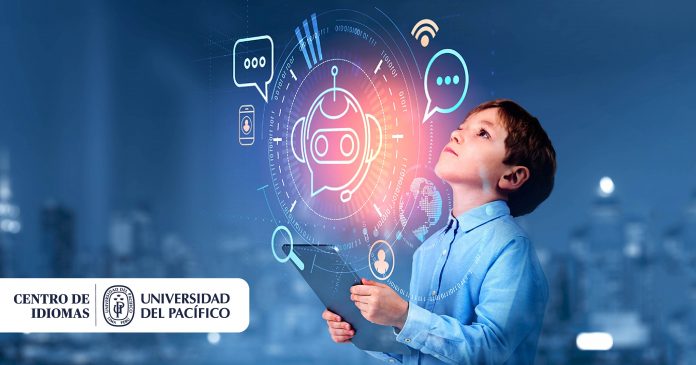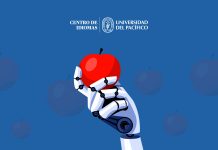Something that we have, for many years, simultaneously yearned for and feared is presently catching up with us. Visions of “thinking machines” musing and pondering, taking decisions and actions and, in many ways, shaping the world for us, are becoming reality in our lives. What was restricted to futuristic novels and movies is turning, for better or worse, existent. And there is no possibility of going back or ignore it.
Artificial intelligence algorithms, often using real-time data, are being designed to take decisions. They are not anymore submissive machines restricted to only mechanical or programmed responses. In the words of Jessica Harris: “Artificial intelligence (AI) is a wide-ranging tool that enables people to rethink how we integrate information, analyze data, and use the resulting insights to improve decision making—and already it is transforming every walk of life.” (West, D & Allen, J.)
In developed countries AI is already being employed in finance, national security, health care, criminal justice, transportation, and smart cities that have altered decision making, business models, risk mitigation, system performance and, of course, education, among many other things.
What about our country?
In Peru, some progress has been observed in the development and adoption of Artificial Intelligence, mainly from large economic groups and a small sector of academia, while the public sector has made very few attempts. These use cases have been centralized mainly in Lima.
Peru appears in position 98 of 172 countries in the 2020 Oxford Insights Government AI Readiness Index. There are several universities that teach AI courses, but there is no specific career in it. Salary incentives in academic researchers in AI is low. Low knowledge of English figures among the weaknesses for advancement. The Secretariat of Government and Digital Transformation of the Presidency of the Council of Ministers proposed in 2021 a work document for citizen participation in the period 2021-2006 through the Estrategia Nacional de Inteligencia Artificial (ENIA).
In regard to our field of education, Mathew Lynch, a widely held author in the AI subject, says: “The inclusion of artificial intelligence in curricula is forcing us to re-examine not only what we teach but how we teach it. Narrow AI is quickly becoming a part of the PK-12 curriculum. It’s just the beginning of what’s possible in artificial intelligence.” (Lynch M.)
But it is not only a matter of learning about AI, but that it is transforming what we learn, how we learn and the ways in which education is organized. An explosion of data has taken place and AI has become a most powerful instrument for heightening teaching and learning.
Some of the academic fields in which AI is already being used in the developed world are: Classroom/Behavior Management, Language Learning. (there are hundreds of language learning apps that are powered by AI), Writing. (helping students improve their writing skills). Assistive Technology. (helping special needs students access a more equitable education), Gamification, Early Childhood Education, Adaptive Learning. (assessing their present skill level and creating a guided instructional experience that helps them become proficient), Lesson Planning, Classroom Audio-Visual (managing classroom audio-visual devices), Parent-Teacher Communication, Test Preparing. (helping student’s study for exams). Scheduling, Assessment. (grading exams and homework for teachers).
Additionally, in the turf of education, AI is being used in: Data and Learning Analytics (analyzing and interpreting data). Learning Management Systems. (online instructors may use it to manage online learning and flipped or blended learning), Staff Scheduling and Substitute Management, Professional Development. (providing professional development to educators while allowing them to learn at their own pace), Finance (helping education administrators to manage their schools’ budget, make purchases, etc.), School Management (aiding to manage entire schools, powering student records systems, transportation, IT, maintenance, scheduling, budgeting, etc.). (Lynch, M.)

Some specific things in which AI can help teachers:
- In the same way AI will not completely substitute judges or lawyers, AI will not replace teachers although it could in a great manner facilitate and expedite our work.
- It could also identify knowledge gaps and learning disabilities using information from students’ attendance and academic history.
- It can be employed to create study plans, analyze test results, and grade students’ work.
- It may improve the teaching and learning conditions and reduce the workload for both.
- The use of AI-based tutors helps students adopt productive learning behaviors, such as self-regulation and self-explanation.
- Thanks to AI, teachers and schools will be able to create textbooks and exercises that are customized to the needs of their specific courses and students
- “Teaching is a complex social interaction. This means teachers can rest assured —for the moment at least— that robots won’t be replacing them.They will instead assist teachers in becoming better at their job.”
There are many other uses and advantages, but the space is becoming scarce. There is abundant literature for you to check. And yet, you still should know the other side.
The dark side
There will be many benefits for education in AI. But the preoccupation remains. It will be as honest and virtuous as the people who program it. Nobody else but legendary Stephen Hawkins warned that: “the development of full artificial intelligence could spell the end of the human race.” It has also been said that: (AI) “It’s now showing glimmers of how it might forever change the learning process, one of the oldest skills that mankind has mastered.”
In the conclusion of Darryll M. West: “To summarize, the world is on the cusp of revolutionizing many sectors through artificial intelligence and data analytics. There already are significant deployments in finance, national security, health care, criminal justice, transportation, and smart cities that have altered decisionmaking, business models, risk mitigation, and system performance. These developments are generating substantial economic and social benefits.” (West, D.)
There is then vigorous debate throughout the technology circles and yonder about the possible moral issues in artificial intelligence. In fact, Elon Musk, alongside Stephen Hawking, began warning us about A.I. and the massive risks involved three years ago. He has even started a billion-dollar campaign to advocate against the advancement and use of artificial intelligence. Lynch concludes: “My vision for the future of A.I. in education is not necessarily the total absence of it, but one where its use is strictly regulated and monitored, while heeding the advice of those learned on the subject, like Elon Musk.” (Lynch M.) You have been warned.
References:
Admin, TED. January 25, 2023 The role of artificial intelligence in education. https://cyberleninka.ru/article/n/the-role-of-artificial-intelligence-in-education/viewer
Mathew Lynch. AI CURRICULA FOR K-12 CLASSROOMS. May 14, 2019 https://www.thetechedvocate.org/ai-curricula-for-k-12-classrooms/
West, Darrell M & Allen John R.. How artificial intelligence is transforming the world. April 24, 2018. https://www.brookings.edu/research/how-artificial-intelligence-is-transforming-the-world/











Many astrologers believe that we are entering the “Age of Aquarius”, an astrological age that affects humanity, possibly by influencing the rise and fall of civilizations or cultural tendencies. The American Revolution, the Industrial Revolution, and the discovery of electricity are all attributable to this renegade event in past times. Regardless of personal believes, it is undeniable that we are currently passing through the Fourth Industrial Revolution: rapid change to technology, industries, and societal patterns and processes due to increasing interconnectivity and smart automation. A part of this includes the joining of technologies like artificial intelligence, gene editing, and advanced robotics that blur the lines between the physical, digital, and biological worlds.
It seems like the future foretold in American cartoons like The Jetsons and Futurama are just around the corner. Many claim that business magnate Elon Musk is the Henry Ford of our times. Many believe that cryptocurrencies will dictate the future of (digital) commerce. While we can dispute the specifics, it is a fact that the world has changed in an unprecedented way in the 21st century.
Artificial intelligence is a hot topic that is trending worldwide. It is a powerful tool whose energy must be harnessed properly in order to maximize positive results. We could take it a step further an categorize it as a potential weapon: it can protect or it can harm, it all depends on who is using it and for what purpose.
AI must be regulated and properly implemented in different sectors, including educational institutions. We must instill in our students values and principles that will guide them in their quest through this new technological era. Teachers have to lead by example and demonstrate to our students that we are the masters of technology, not its slaves. Otherwise, we are bound to lose control and be fated to obscurity. Replaced by our own creation in the never-ending search of knowledge for the improvement of live.
The good news is that it is still early to change course in this ship called life and sail to fresh new waters of wisdom. The future has not been written. There is no fate but what we make of ourselves.
Comments are closed.